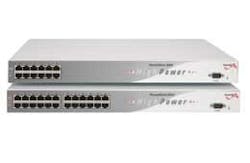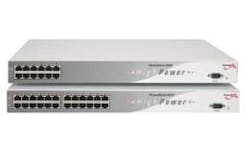The push for a more inclusive higher power Power over Ethernet (PoE) standard is on, with the possibility of a final draft coming in two years.
The existing 802.3af PoE standard, which was ratified by the IEEE last June, provides up to 15.4 watts of power. But it does not provide enough power for a new generation of Ethernet devices that require more than 15.4 watts of power.
Representatives from PowerDsine Ltd (www.powerdsine.com), an Israel-based manufacturer of PoE technology, are eager to open up the door further. They are participating with the IEEE in hopes of setting a new high-power PoE standard.
"With this, we believe the usage of power over Ethernet by the industry will be enlarged dramatically," says Igal Rotem, CEO for PowerDsine. "We are eager for new applications that will reap the benefits of this, and we will actually give the solution that these guys need."
PoE is a technology for wired Ethernet, the most widely installed LAN technology in use today. PoE allows the electrical power necessary to operate devices, and to be carried by data cables rather than by power cords. It minimizes the number of wires that must be strung for a structured cabling network.
PoE also potentially reduces the cost of installing such end devices as IP phones and WLAN access points. Because the network switches also can deliver power through the standard Ethernet infrastructure, the need to connect each IP phone or WLAN access point to a separate electrical circuit and install additional AC power outlets is eliminated. Also, PoE can provide customers with uninterruptible power for critical applications, such as IP (Internet protocol) phones, security cameras, entry loggers and other powered data terminals.
PowerDsine is teaming up with other market leaders to work with the IEEE toward the completion of a new higher power PoE standard called PoEplus. The IEEE has issued a call for interest on the subject, and the committee is delegating a study group. A task force will then work on details of a finalized standard, a process that is expected to take about two years.
Though PowerDsine has already developed a high-powered PoE midspan that generates more than 15.4 watts of power, the technology is not based on an industry standard. Rotem says the standard will give technology providers better specs to shoot for as they attempt to bring the level of service to a much higher level.
"The proposed standard will provide at least twice the amount of power and have more than 30 watts per port on the switch side, and around 26 but minimum power at the CPE side," says Rotem.
"Everyone will see a great benefit from this and extend it to more applications," he predicts.

